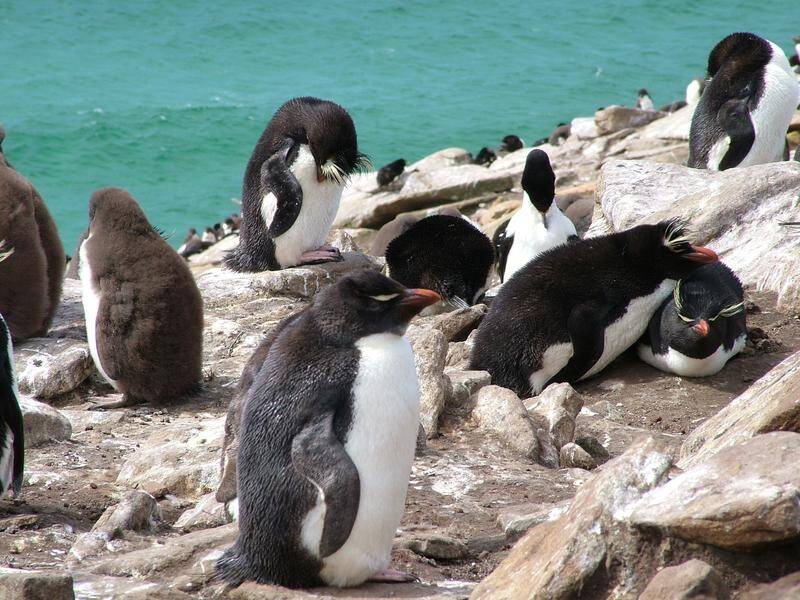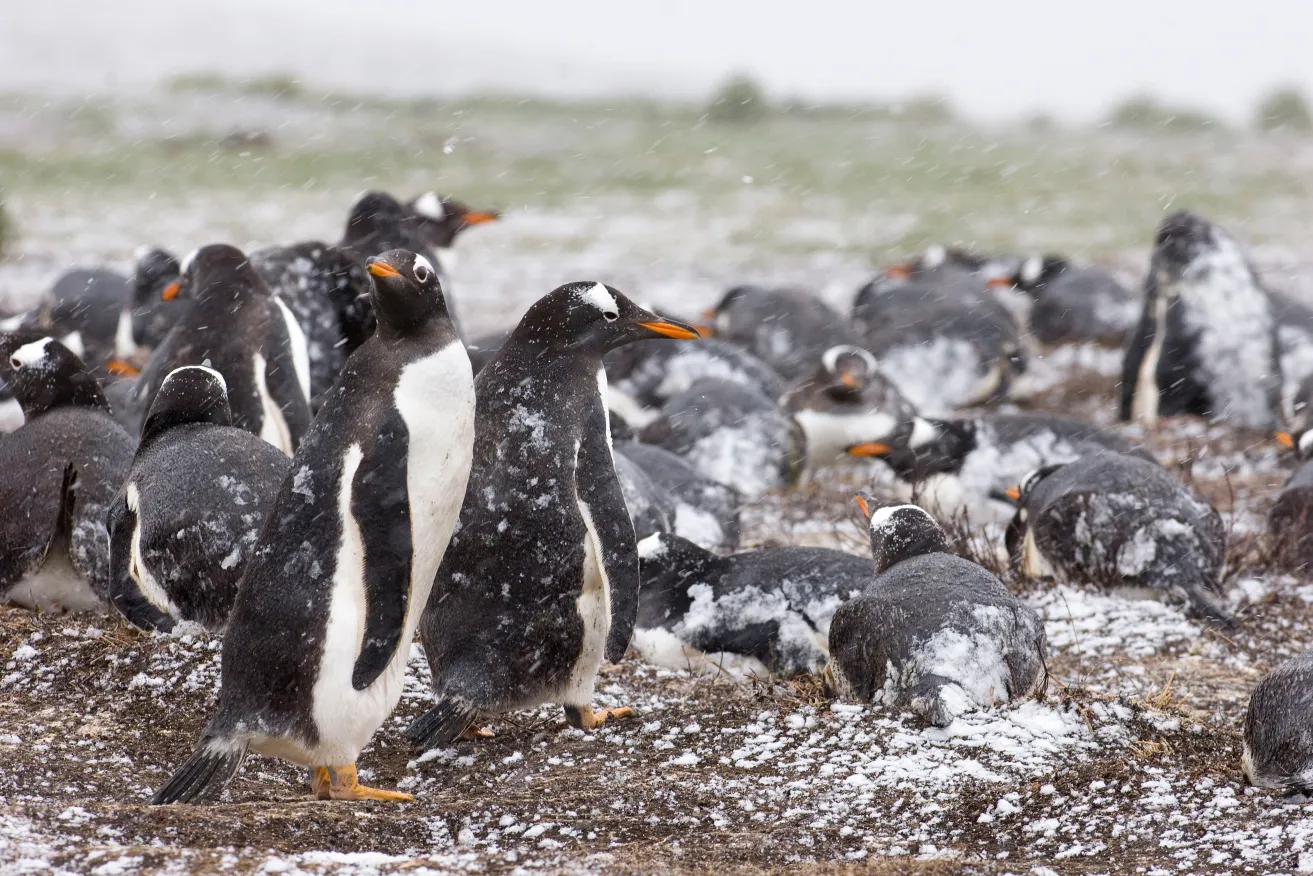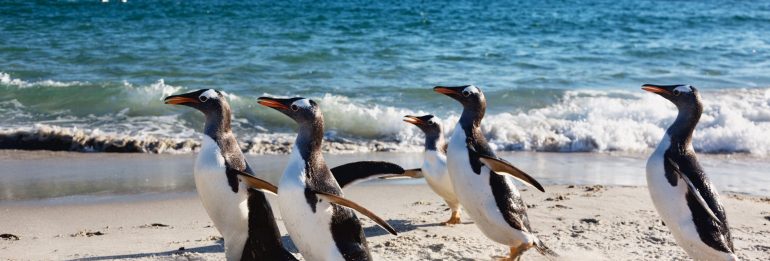Penguin colonies near Antarctica have reported cases of bird flu infection. Reuters has reported that this disease has already claimed the lives of 200 chicks and several adult penguins. The detection of a deadly avian influenza virus in gentoo penguins, as announced by the Scientific Committee on Antarctic Research, is a cause for serious concern. This marks the first time this virus has been identified in these penguins, raising alarms about the potential for the virus to spread within large penguin populations in Antarctica. Researchers discovered approximately 35 deceased penguins on January 19 in the Falkland Islands in the South Atlantic. Testing of samples from two of these penguins yielded positive results for the H5N1 avian influenza virus. The disease also threatens elephant seals and fur seals.
Crisis in the Falkland Islands: Avian influenza claims the lives of hundreds of penguin chicks and threatens other marine life species
The government of the Falkland Islands informed Reuters that numerous additional penguin fatalities had been documented under similar conditions. So far, as of January 30, more than 200 chicks and several adults are known to be dead.
The fatalities underscore the susceptibility of gentoo penguins to a destructive ailment that has greatly reduced bird populations across the globe in recent months. Nevertheless, these particular penguins, which typically do not frequently migrate between the Falkland Islands near Argentina and the Antarctic Peninsula, are less likely to contribute to the virus's transmission to the southern continent.
Conservationists are also raising concerns about other species. Elephant seals and fur seals are also at risk from the disease. "This is particularly concerning given that South Georgia is home to 95% of the world's population of Antarctic fur seals. The loss of this population could lead to a critical situation for this species," the scientists emphasize.

Bird fluin most cases it spreads among birds and usually does not pose a threat to humans. The main source of avian influenza is wild birds, especially waterfowl. However, sometimes the virus can spread to domestic birds.
Colonies 'can accelerate the spread of disease'
Antarctica confronts an elevated risk due to the heightened prevalence of avian influenza in South America and the swift transmission rate of the virus. The H5N1 strain was initially detected in South America in October of last year, coinciding with the 2022 bird migration season, and rapidly disseminated from Colombia to Chile within a mere three months.
According to the latest report from OFFLU, a global network of influenza experts, Chile and Peru have witnessed over 500,000 fatalities among wild birds, representing at least 65 different species, along with an additional 20,000 mammals. The actual mortality figures are likely significantly higher, given the challenges associated with testing.
Antarctica harbors a variety of bird and marine mammal species that gather in extensive, densely populated colonies, potentially accelerating the spread of diseases. Among these species are the emperor penguin and the Antarctic fur seal. These animals tend to aggregate, with some regions inhabited by gentoo penguins, chinstrap penguins, elephant seals, and fur seals, which do not naturally avoid one another on land.
Local marine mammals, predominantly the 95% of Antarctic fur seals that live around one island, are also at similar risk, making them particularly vulnerable to a possible avian flu outbreak.

It is also worth noting that the H5N1 virus threatens the conservation of several bird species. For example, 36 percent of endangered Peruvian pelicans and 13 percent of Chilean Humboldt penguins, also a vulnerable species, died.
Antarctica has never experienced an outbreak of highly pathogenic avian influenza, which is circulating around the globe. Because of this, it is assumed that species in Antarctica have little immunity to this virus.
While it's nearly impossible to halt the virus's prevent the spread of the virus among wild birds, officials are implementing stricter biosecurity measures to protect scientists and tourists.Biosecurity procedures are being improved, including screening visitors for seeds in their clothing and bags, and mandatory disinfection of boots upon arrival to avoid disease transmission from one site to another.
Given the increase in the number of tourists, the season, which will last from October to March, is expected to be the busiest, with more than 115 thousand tourists traveling to the continent. This is the highest figure in history, compared to the total number of tourists in the 2015/16 season, which was only 38,478.
Researchers working with birds in Antarctica are being asked whether to start their research this season or whether to postpone it for a year. Although avian flu is the most pressing problem in Antarctica this season, Dr.JaneRumble noted that many bird species alsoencounter additional challenges, like excessive fishing and the impacts of climate change. As an illustration, Antarctica is experiencing a rate of warming that is double that of the global average. This warming is impacting marine ecosystems, leading to consequences such as the loss of around 10,000 emperor penguin chicks due to the melting and breaking of sea ice before the yаcquire the essential waterproof plumage needed for open-ocean swimming.

